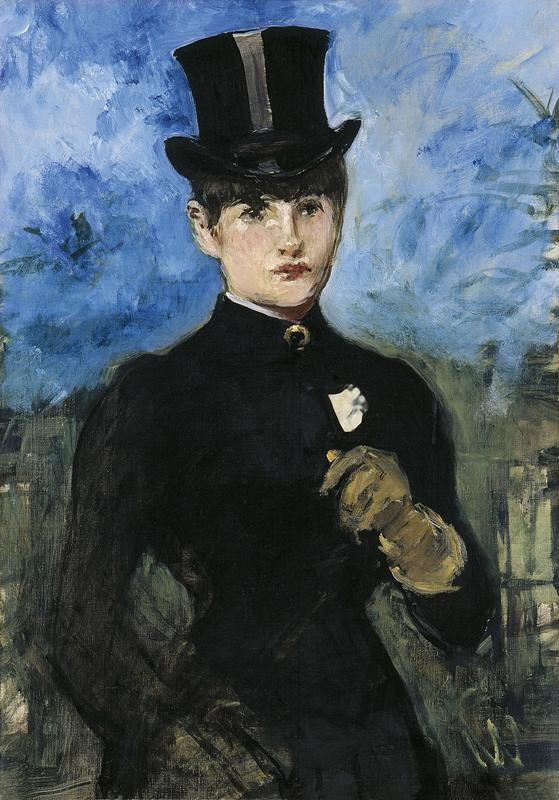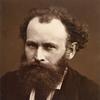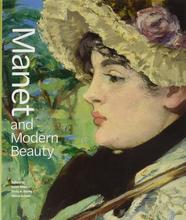More about Horsewoman, Full-Face
- All
- Info
- Shop

Contributor
Horsewoman: beacon of the future.
The painting was supposed to be part of a larger series based on Japanese prints of courtesans. Different women would represent different seasons of the year. Is this where calendar models come from?
Manet believed his paintings were always about the model. Manet once announced, "I cannot do anything without the model. I do not know how to invent… If I amount to anything today, I put it down to precise interpretation and faithful analysis.” Fortunately, Manet never had to face a shortage of models. If he couldn’t afford it, he had a wide variety of friends to choose from. Manet teaches us, it is always a good idea to make a lot of friends.
But Horsewoman was not a friend or a prostitute. Her mother, Madame Saguez, was a bookseller. Manet had the young woman pose for three paintings. This one was commissioned by Antonin Proust, the Minister of Fine Arts, and also a friend of the painter.
Manet was a year away from meeting the grim reaper. Syphillis was killing him, yet he wasn’t done painting. He switched to pastels for ease. This way he could paint faster. This work seems to have been finished in one go, which is what Manet was going for. However, Manet wasn’t one to let his darlings be. He had to perfect them. French critic Jacques Emile-Blanche once mentioned that Manet had a hard time getting the top hat to look right. He re-did the hat some twenty times while Blanche hung out with him one day.
Manet was imagining the future through these women. He was a painter of modern life, after all. In his new world, it mattered little if you were a man or a woman. You could be anyone. Just like the horsewoman. Her androgyny is intentional, as are her clothes (borrowed from a friend who lived close by). Her femininity peeps out every now and then. The edge of her fringe, the curve of her body. The horsewoman is likened to a dandy, in that her offense is masculinity, and his femininity. In Manet’s modern world, it wouldn’t be an offense anymore.
This work was supposed to be Manet’s entry to the Paris Salon of 1883. However, death had other plans for the hopeful fellow. He perished a month before the show.
Sources
- “Horsewoman, Full-Face (L'Amazone).” Museo Nacional Thyssen-Bornemisza. Accessed September 30, 2019. https://www.museothyssen.org/en/collection/artists/manet-edouard/horsew….
- Hamilton, Adrian. “Manet and Woman: Portraying Life.” The Independent. Independent Digital News and Media, January 22, 2013. https://www.independent.co.uk/arts-entertainment/art/features/manet-and….
- Bell, Julian. “Manet: 'Sudden Sensuous Dazzle'.” The New York Review of Books. Accessed September 30, 2019. https://www.nybooks.com/articles/2011/07/14/manet-sudden-sensuous-dazzl….
- Tate. “'Woman with a Cat', Edouard Manet, C.1880.” Tate, December 31, 1879. https://www.tate.org.uk/art/artworks/manet-woman-with-a-cat-n03295.
- Allan, Scott, Emily A. Beeny, Gloria Lynn Groom, Bridget Alsdorf, Carol M. Armstrong, Helen Burnham, Leah Lehmbeck, Devi Ormond, and Manet Édouard. Manet and Modern Beauty: the Artists Last Years. Los Angeles: The J. Paul Getty Museum, 2019.
- “The Amazon.” The Amazon by Edouard Manet. Accessed September 30, 2019. http://www.edouard-manet.net/amazon/.












